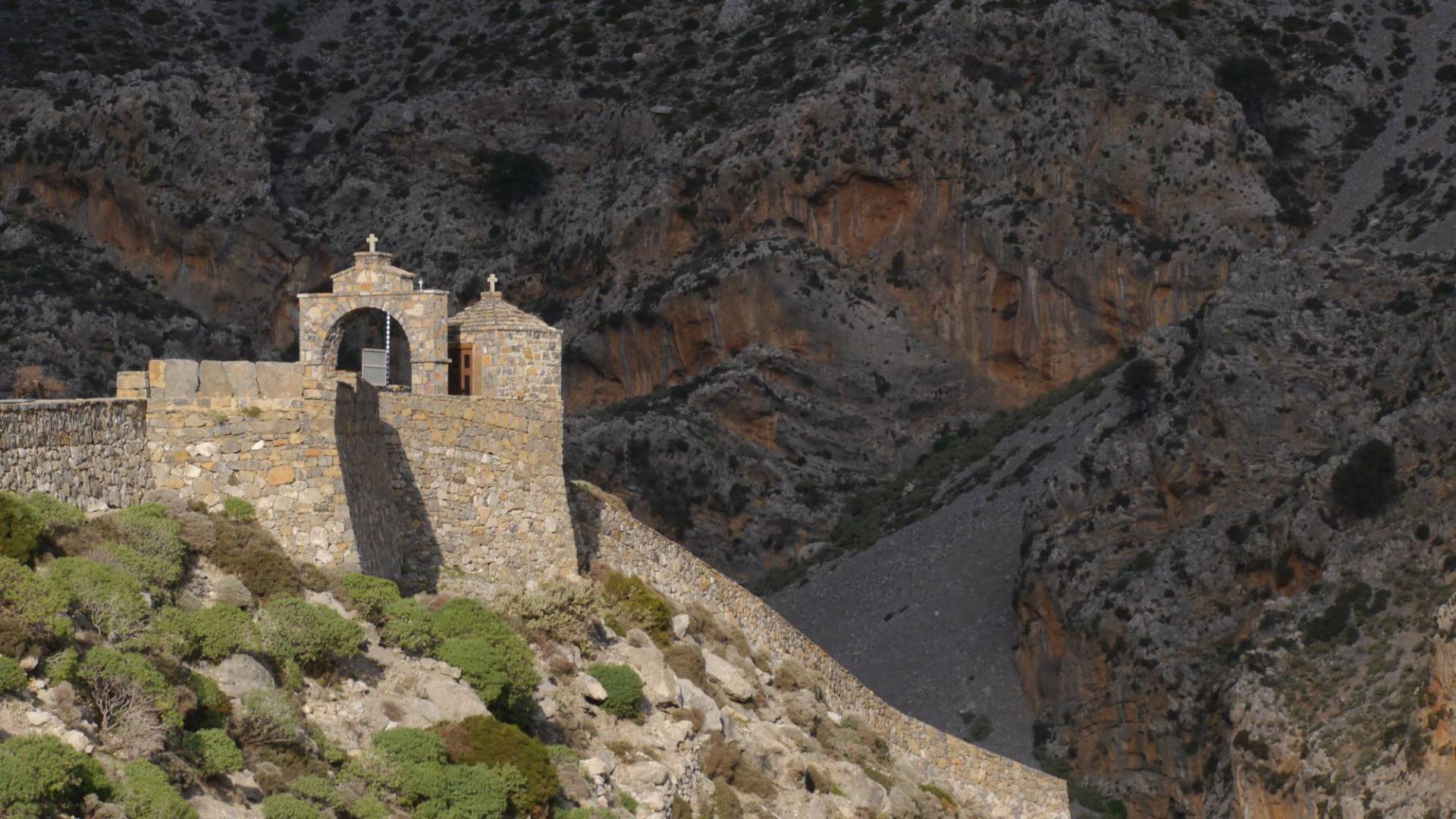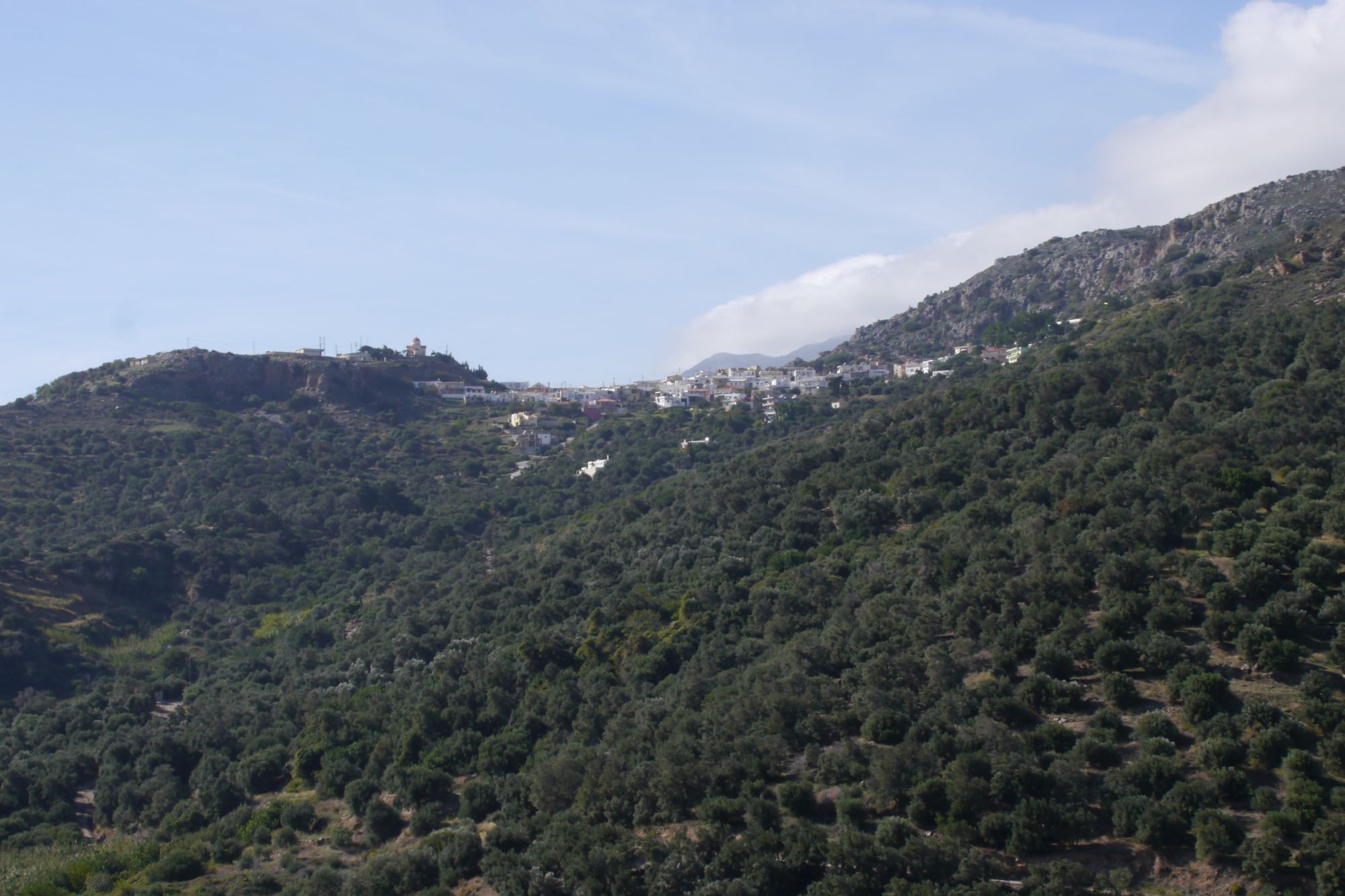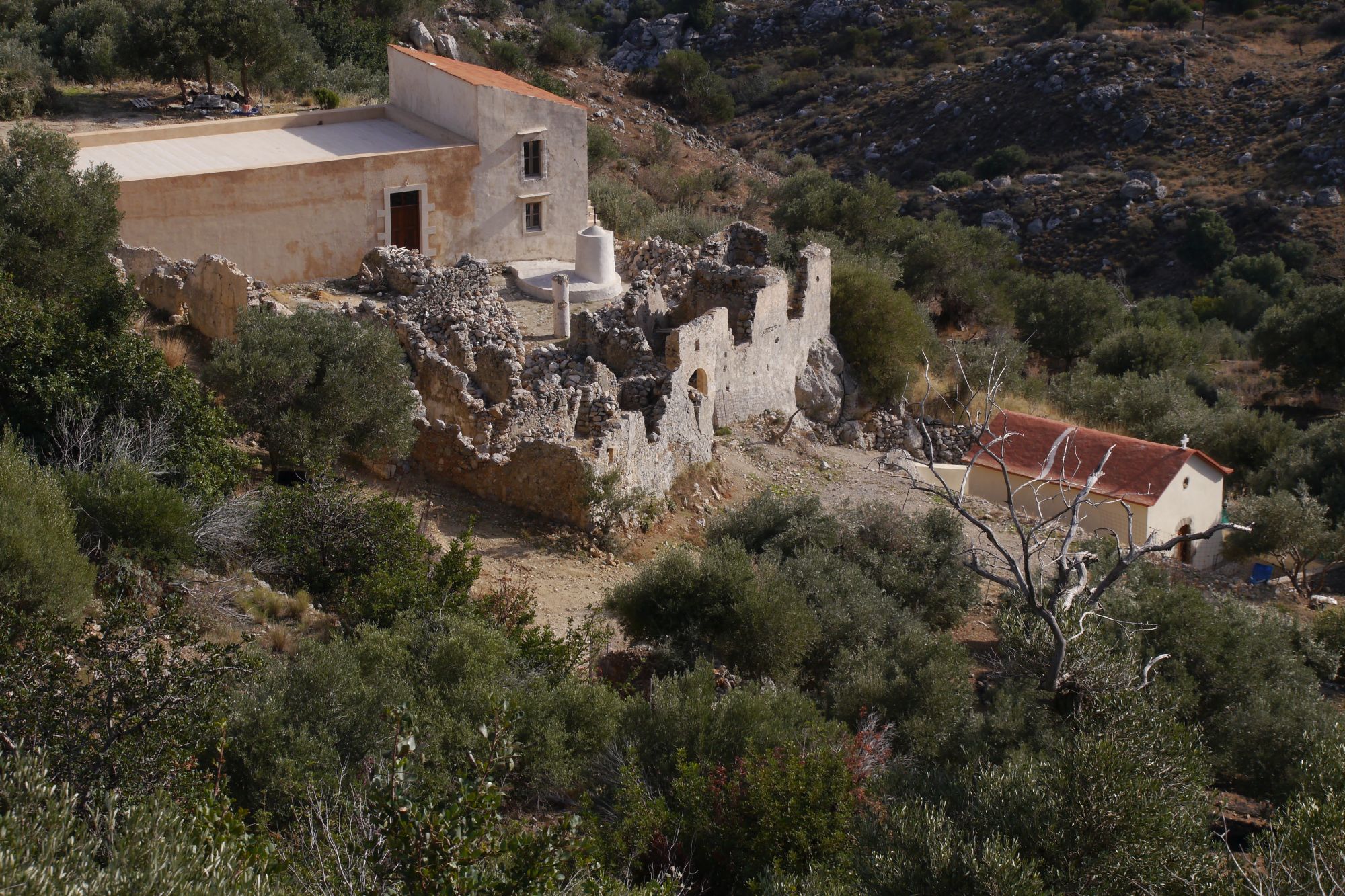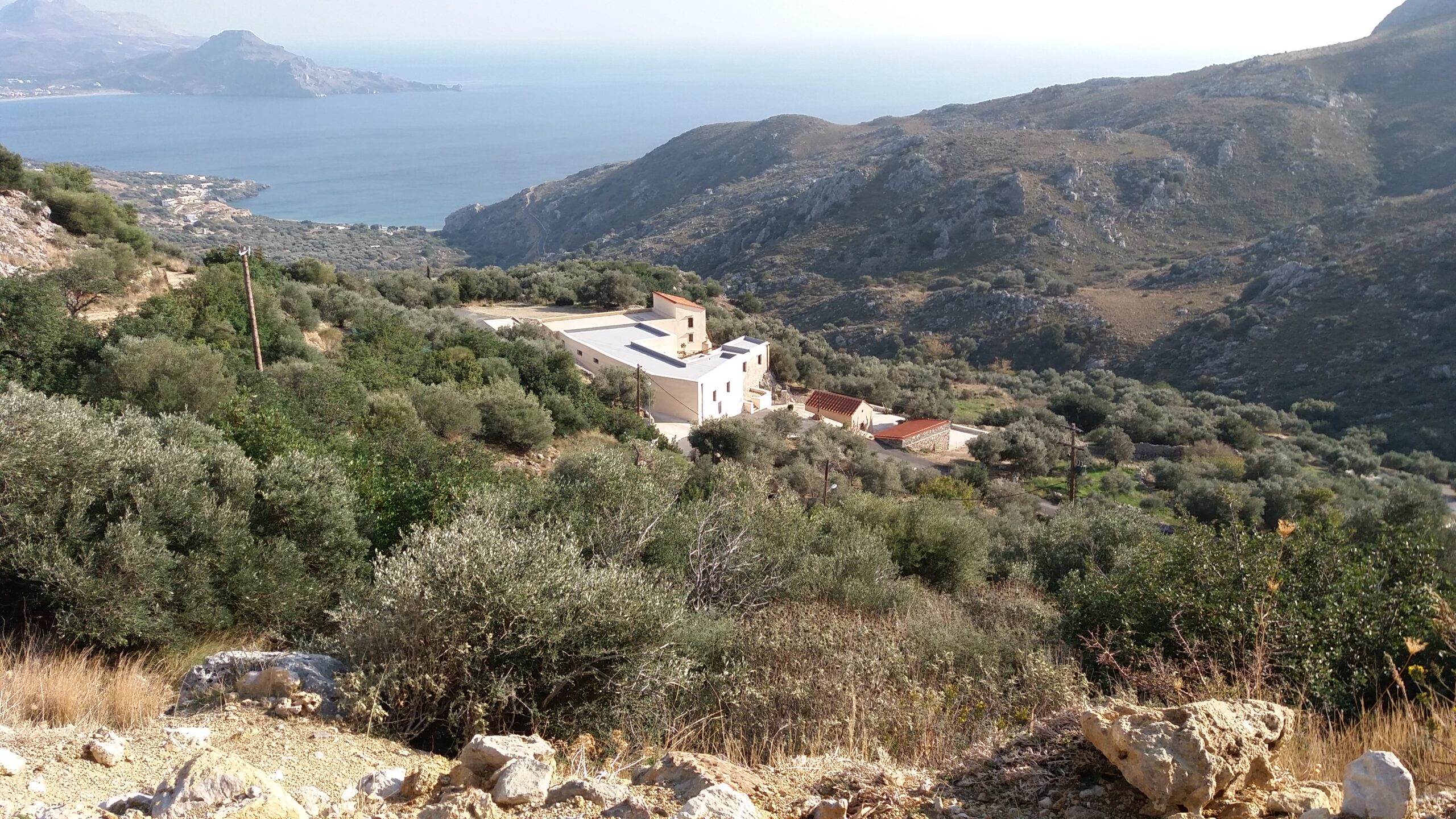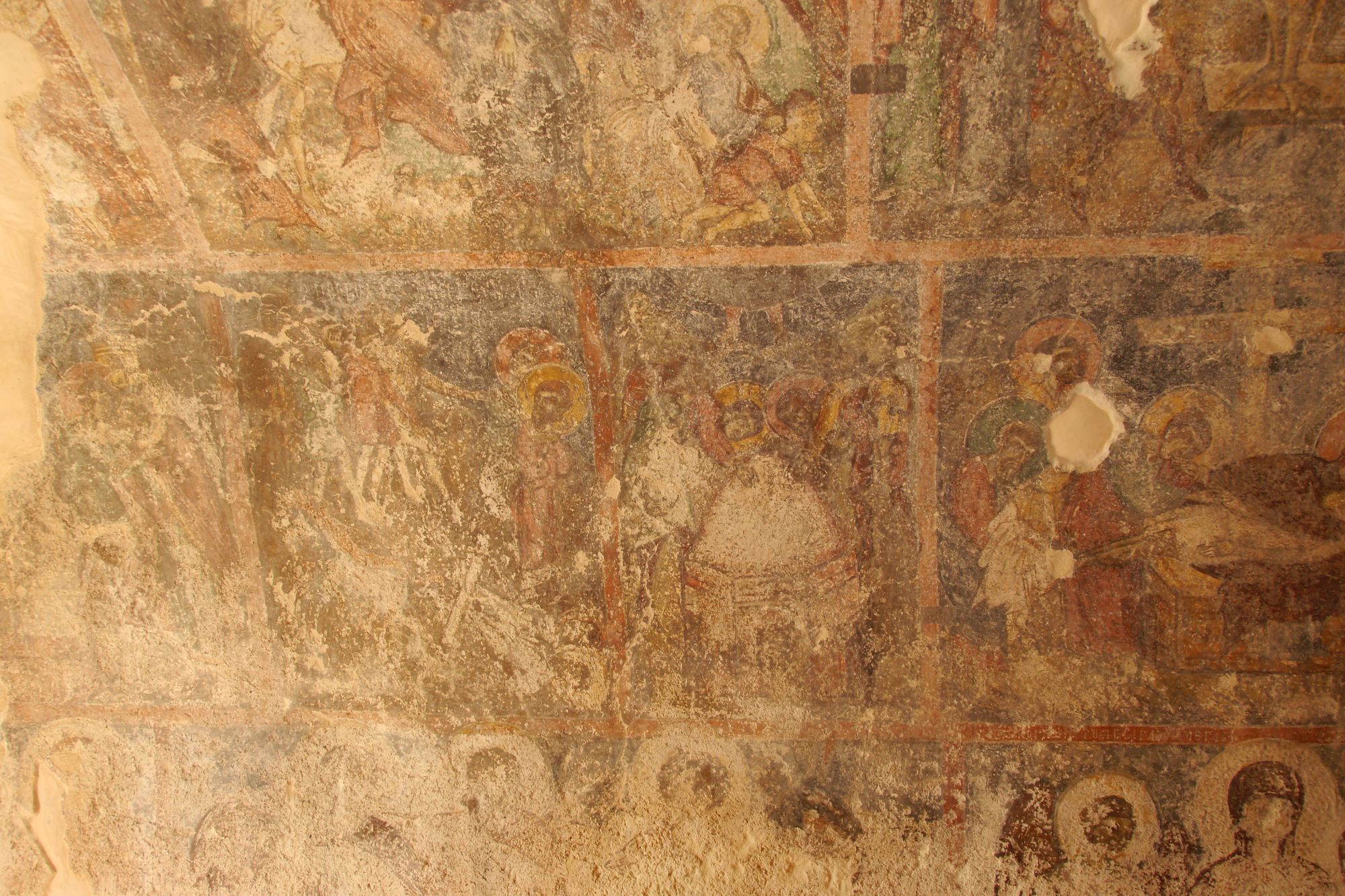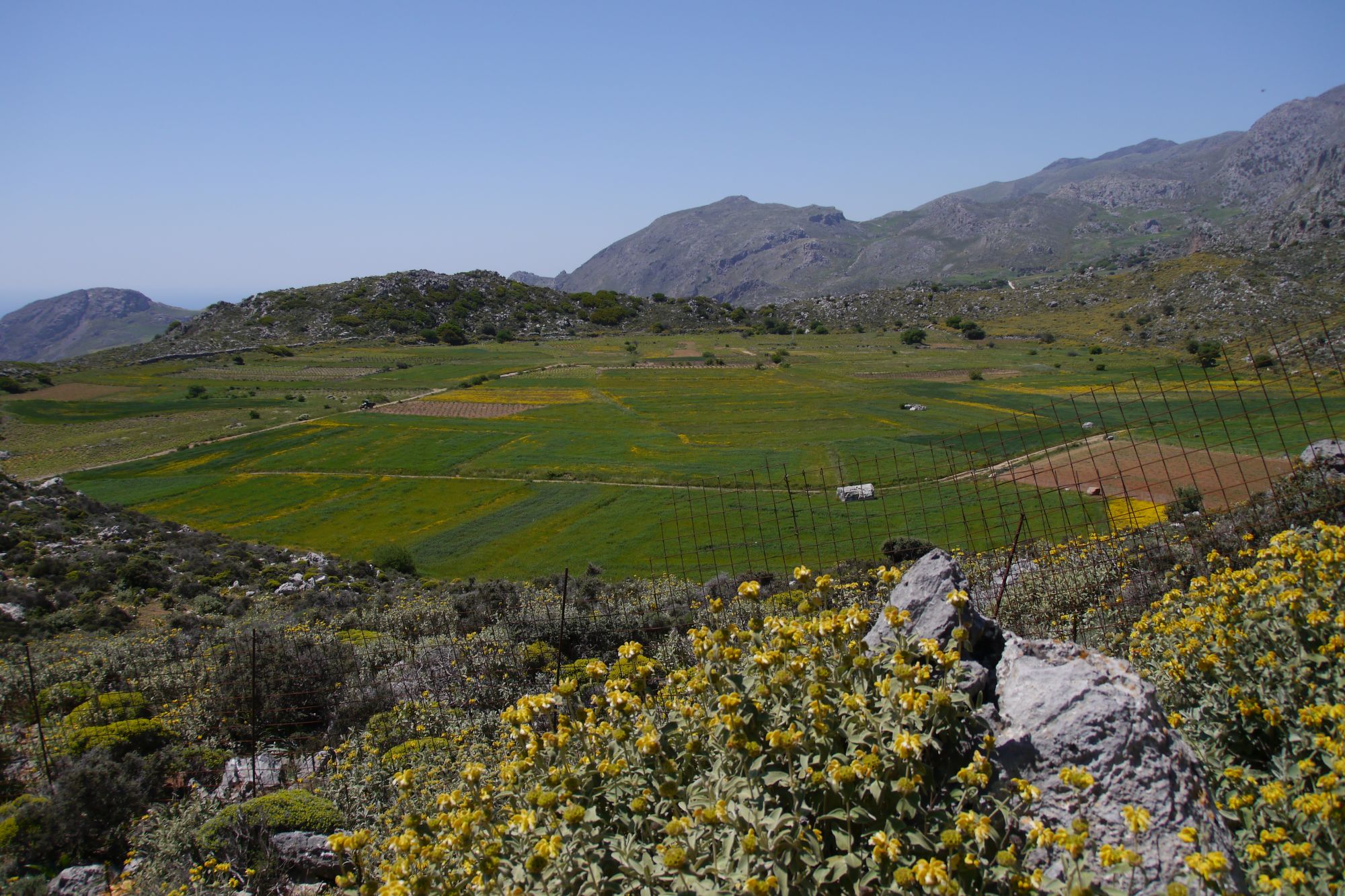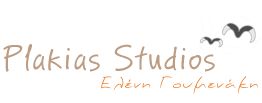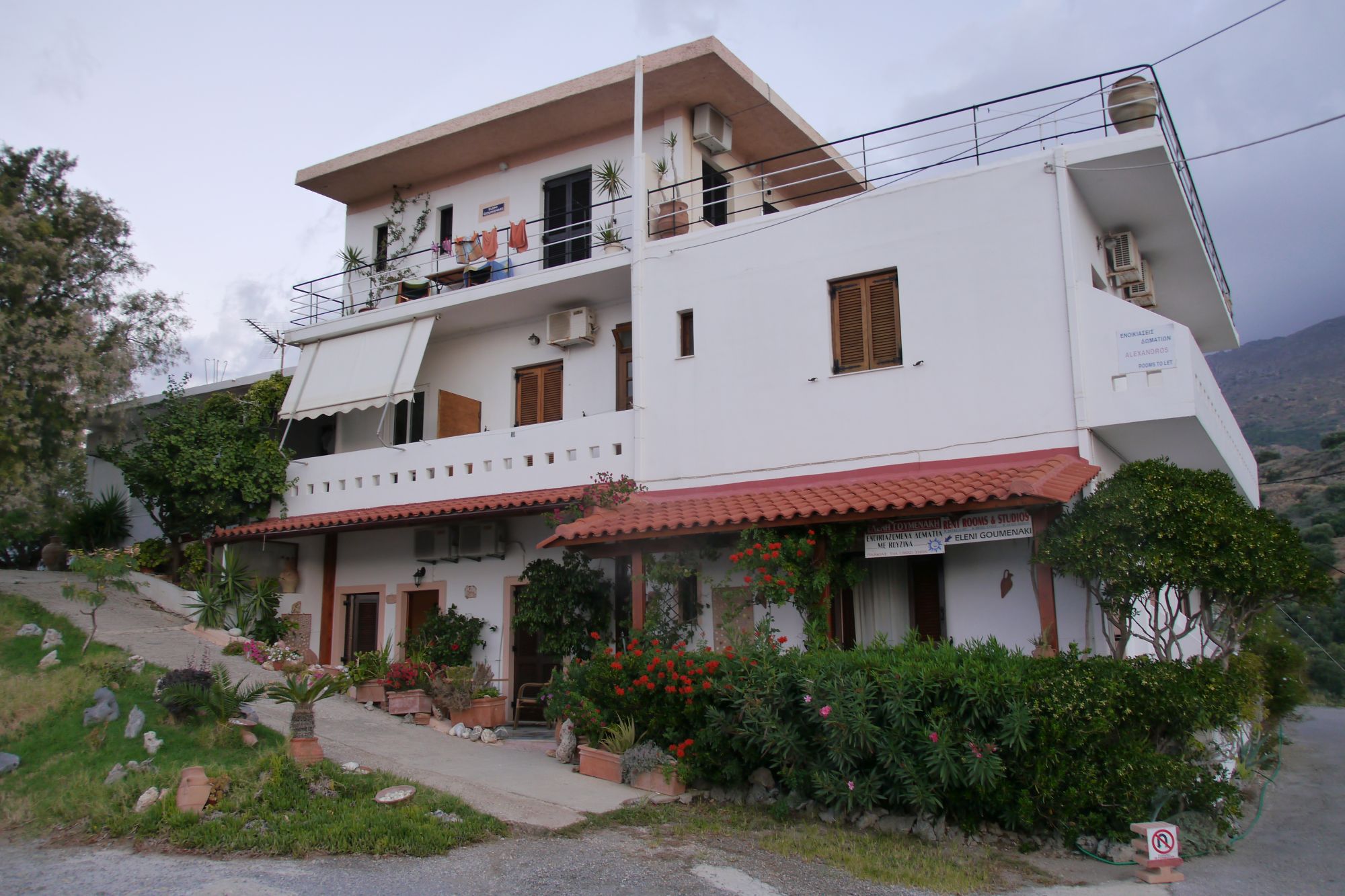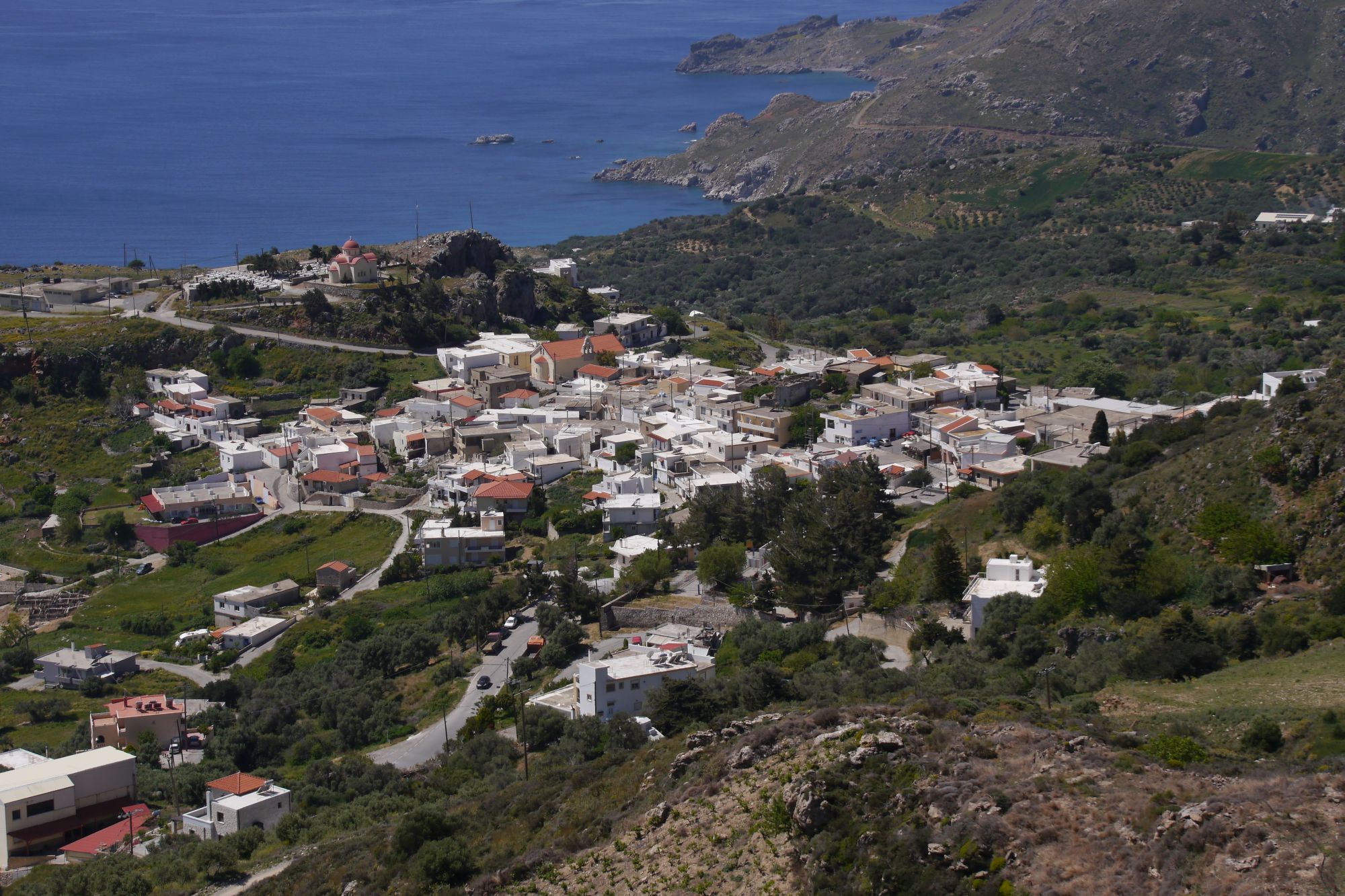
The local community of Sellia consists of the settlements of Sellia, Plakias and Souda. It is one of the larger towns in the community with a total of 540 residents according to the 2011 census. Sellia itself (316 inhabitants) is a traditional and lively mountain village, spread over a mountain saddle, on the south-eastern slope of the mountain peak Krioneritis (1,310m), at about 280m altitude, and overlooking the bay of Plakias (eastern part of the village) and the Souda Bay, as well as the island of Gavdos (western part of the village). The local area has a total area of 14 km², of which 6 km² is agricultural land. It is bounded on the east by the Kotsifou River, on the west by the Souda – Finikia – mountains line, on the south by the sea (Souda – Plakias and on the north by the mountains above the village.
The village is called Sellia because it was built on two mountain ridges (from the Greek word η σέλα/the sela = the saddle). The Kotsifou Gorge forms the access to Sellia from the north. It is named after the blackbirds that built their nests in the rocks – the gorge of the blackbirds. The traffic connection through the upper part of the gorge was made possible in 1951-53 by the complex and difficult construction of the road. Previously there was only a donkey path.
Since 1879, Sellia has been the administrative seat of the municipality of Finikas, which includes all the towns of the coast. Many of the mayors came from Sellia. With the Greek municipal reform called Kapodistria in 1997, Plakias became the administrative seat of the municipality of Finikas, which was also essentially retained with the administrative reform (Kallikratis Law of 2010).
Historical development
Archaeological research indicates that there were settlements in the area as early as the Neolithic Age (11,500 – 3,500 BC).
The most important archaeological area is in the Finikias-Souda-Voukelaris area, where there are remains from Roman and Byzantine times.
The founding of the village at the current location is estimated around the year 1200 AD, when the settlements lying in the area (Souda, Voukelaris, Agia Marina, Kambos, Plakias) united to protect themselves against attacks by corsairs.
Only the settlement of Finikias with the monastery of Archangel Michael, of which only ruins were left until 2016 except for a part that has already been renovated, survived with few residents until the beginning of the 20th century. The monks left the monastery in 1900 and left the extensive property to the Municipality of Sellia. The last inhabitants of Finikias moved away from there in 1915. Today (April 2023) the reconstruction of the monastery is complete and now houses the local history and church museum of Sellia.
During the Ottoman occupation
According to legend, not only did Sellia never let itself be conquered by the Turks, but no one ever set foot in the village. However, there are also statements that two Turks once lived in the village. There are other legends about how they kept the Turks, but also the corsairs, away from the village.
Many Selliani were partisan leaders and active fighters in the western part of the province of Agios Vasilios or in the prefecture of Rethimno during the years of resistance against the Ottomans 1821-98.
Of the many resistance actions during this period, two battles deserve special mention:
1. The Battle of Charoupidia (roughly where the water silo is today on the road between Sellia and Plakias) in July 1867
Coming from Sfakia, a army approached Sellia with 10,000 soldiers. With the support of the villages of Rodakino, Mirthios and Lefkogia, among others, the Ottomans were able to be beaten back by severely injuring their leader and causing great turmoil in his army and enough injuries. This fight is still sung about in a country song today.
2. The Battle of Sellia on April 10, 1896
At that time the Cretan Commission for the Change of Government was based in Sellia; it was the period shortly before the liberation of Crete from the Ottomans. In order to destroy this commission, a Turkish army set off from Koksare towards Sellia. The commission was able to escape in time. The armed resistance fighters in the village left the village in good time in order to position themselves strategically. The village was found encircled by the Turks but empty. The ensuing battle above Sellia, with support from Preveli and eventually Asia Gonia, Alones, Kali Sikia and other villages, was fierce and deadly. Disorder and chaos was created in the Turkish ranks, forcing them to retreat with casualties. This struggle had an impact on Crete’s further resistance against the Ottomans, which then led to real independence in 1898.
Celebrities
Sellia has produced many academics over the past 120 years or so. Two of them should be highlighted because of their high profil in Greece:
Christos N. Makris (1880-1912)
He was a doctor of the Athens Theological School, studied Byzantine and ecclesiastical history in Munich in 1906 and then became a lecturer in ecclesiastical history at the University of Athens. He had an outstanding scientific and university career ahead of him. However, despite opposition from his students, confreres and friends, he persisted in 1912 as a patriotic volunteer fighter in the First Balkan War, where he finally died in November of the same year as the leader of his volunteer corps. He was the only university teacher who sacrificed his career to the war.
Georgios I. Kourmoulis (1907-1977)
He studied at the Sellia primary school, completed his schooling in Rethimno in 1924 and then studied philology at the University of Athens. In 1931 he became associate editor, and in 1946 full editor, of the Historical Dictionary of the Academy of Athens. He then completed postgraduate studies in comparative and historical linguistics. In 1945 he was appointed university lecturer in Athens, and in 1949 he was appointed full professor of linguistics. 1In 1957 he became dean of the Philosophical School. In 1957 he became dean of the Philosophical School. In the academic year 1963-1964 he was elected rector and from 1969-1977 he chaired the Society for the Advancement of Education (Φιλεκπαιδευτική Εταιρεία). For a short time he was Minister of Education in the interim government of Ioannis Paraskevopoulos from December 31, 1963 to February 1964. One of his students was Georgios Babiniotis (an important lexographer of Modern Greek). He was a member and chairman of many societies: literature, linguistics, folklore, Cretan studies, etc. From 1963-64 Kourmoulis was chairman of the administrative committee of the University of Crete and was instrumental in establishing its seat in Rethimno. His fundamental contribution to linguistics is still recognized today [Wikipedia + K. Andredakis].
Education and the church
Between 1836 and 1842 the Sellia primary school was founded and operated by the church. This was continued shortly after Crete’s independence in 1899 as a state elementary school with two classes. In 1997, together with other schools in the area, it was merged into a six-class school based in Plakias. The last building of the former primary school in Sellia now houses a professional training center.
There are/were 17 churches and chapels in the local area, most of which date back to the Byzantine period. Of particular note is that of Agios Fotis, east of the village. It has many Byzantine frescoes, some of which have unfortunately been destroyed.
Churches within the Village:
Assumption of Virgin Mary (Kimisi tis Theotokou – Assumption of the Virgin) and Agios Georgios (on the Kastellos, aside the cemetery).
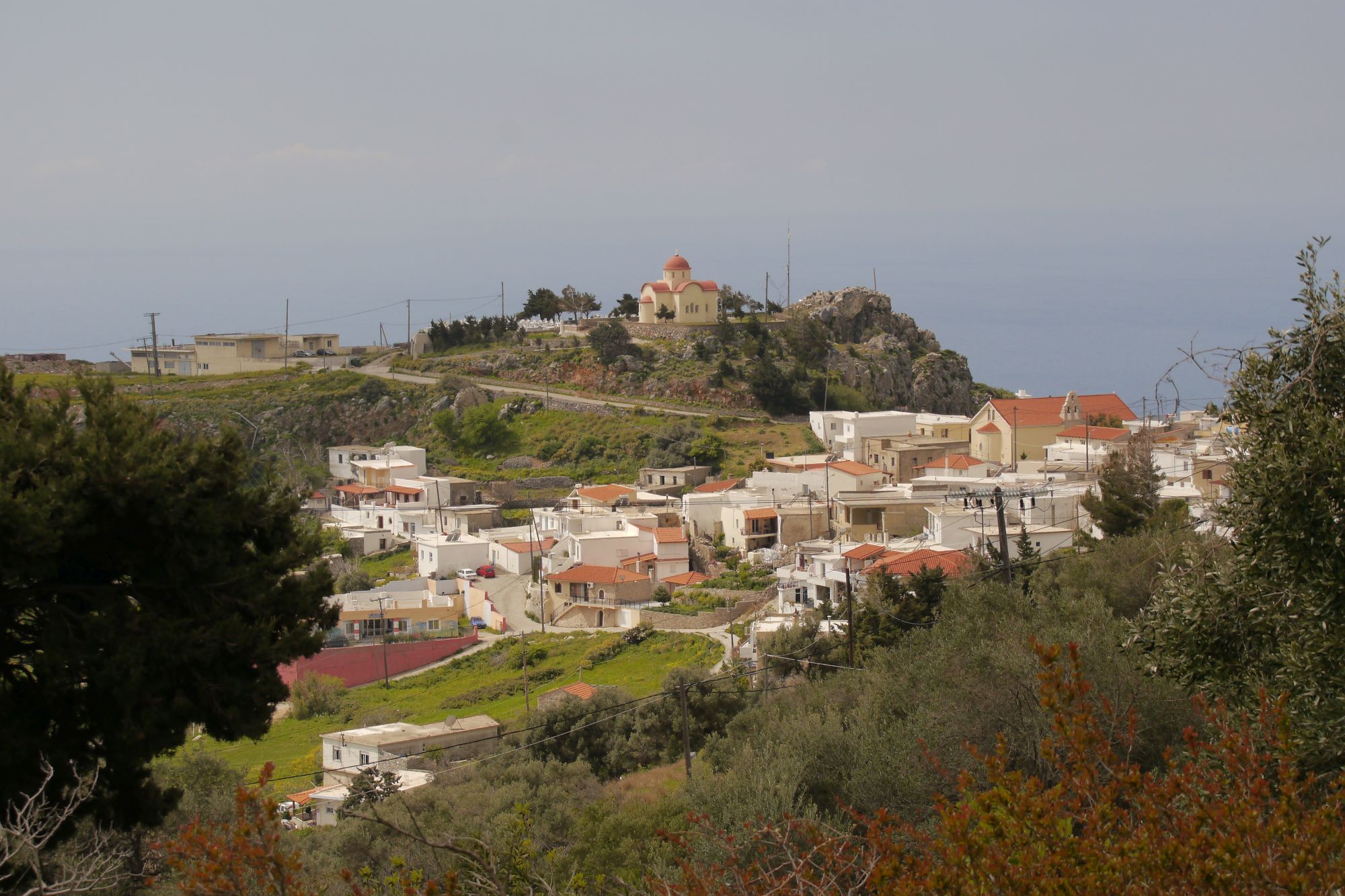
The chapels outside the village:
- Zoodochos Pigi (Plakias),
2. Agios Stavromenos (southeast),
3. Agia Irini (today ruin),
4. Agios Fotis east, near the village),
5. Kera (ruin, at the road to Souda/Plakias),
6. Agios Konstantinos (northwest, about 2 km above the rpoad to Rodakino), 7. Transformation of Christ (Metamorfosi tou Christou – Μεταμόρφωση του Χριστού, at the way to Agios Konstaninos),
8. Gospel of the Virgin Mary (Efangelismos tis Panagias – Ευαγγελισμός της Παναγίας, slightly clos to the ruins of Finikias),
9. Archangel Michael u. Gabriel (Archangelos Michail kai Gavriil – Αρχαγγελός Μιχαήλ και Γαβριήλ, aside the monastery Finikias),
10. Agios Nikolaos (on the road to Kanevos at the entrance of the gorge),
11. Agia Marina (further west of Agios Konstantinos, near the road to Rodakino),
12. Kera (to the west near the village, behind the sports field, half-finished walls),
13. Agios Stefanos (no longer exists & no remains),
14. Agios Andreas (on the meanwhile paved road between Sellia and Souda) und
15. Agios Manolis for about two years slightly above Souda Bay.
Economy
Up until the 1970s, the village economy was based on olive oil and animal husbandry. An exception was the cultivation of the very popular onions and onion sets, which supplied the entire prefecture of Rethimno and Messara. The water supply is secured in this part of Crete due to many natural springs.
Since the 1980’s tourism has been a growing part of the local economy and many Selliani run or work in related businesses from Plakias to Souda.
There is still subsistence horticulture, olive oil production is also still important, as is livestock farming. And there is a small, flat agricultural plain above the village. There is a cheese factory on site that produces excellent kraviera and feta. A milk processing plant is located in the area, which processes the milk from the surrounding villages.
Culture
The village has a library, a folklore museum (both nof which is in operation since about 2018 in the rebuilt part of the former Finikas monastery) and a spiritual-ecclesiastical center.
A special feature of Sellian cultural life is the cultural association Sellia ‘The Finix.x“. In contrast to the cultural associations found in almost every Greek town, which sprouted up everywhere in the 1980s, ‘The Finix’ can look back on more than a hundred years of history and is therefore one of the oldest cultural associations in Hellas.
The first three years since its founding in 1909 were the most important of the association: founding of the evening school for adults, founding and maintenance of a lending library, health and medication care for the residents, sporting activities, operation of a shooting range and promotion of the economy. Then came the First Balkan War, World War I, War of Asia Minor, Metaxa Dictatorship, World War II, Civil War 1946-49 and the Military Dictatorship 1967-74. These long troubled times caused the activities of the association to be interrupted. In 1977 it was revived with the old ideals and its activities still exist today.
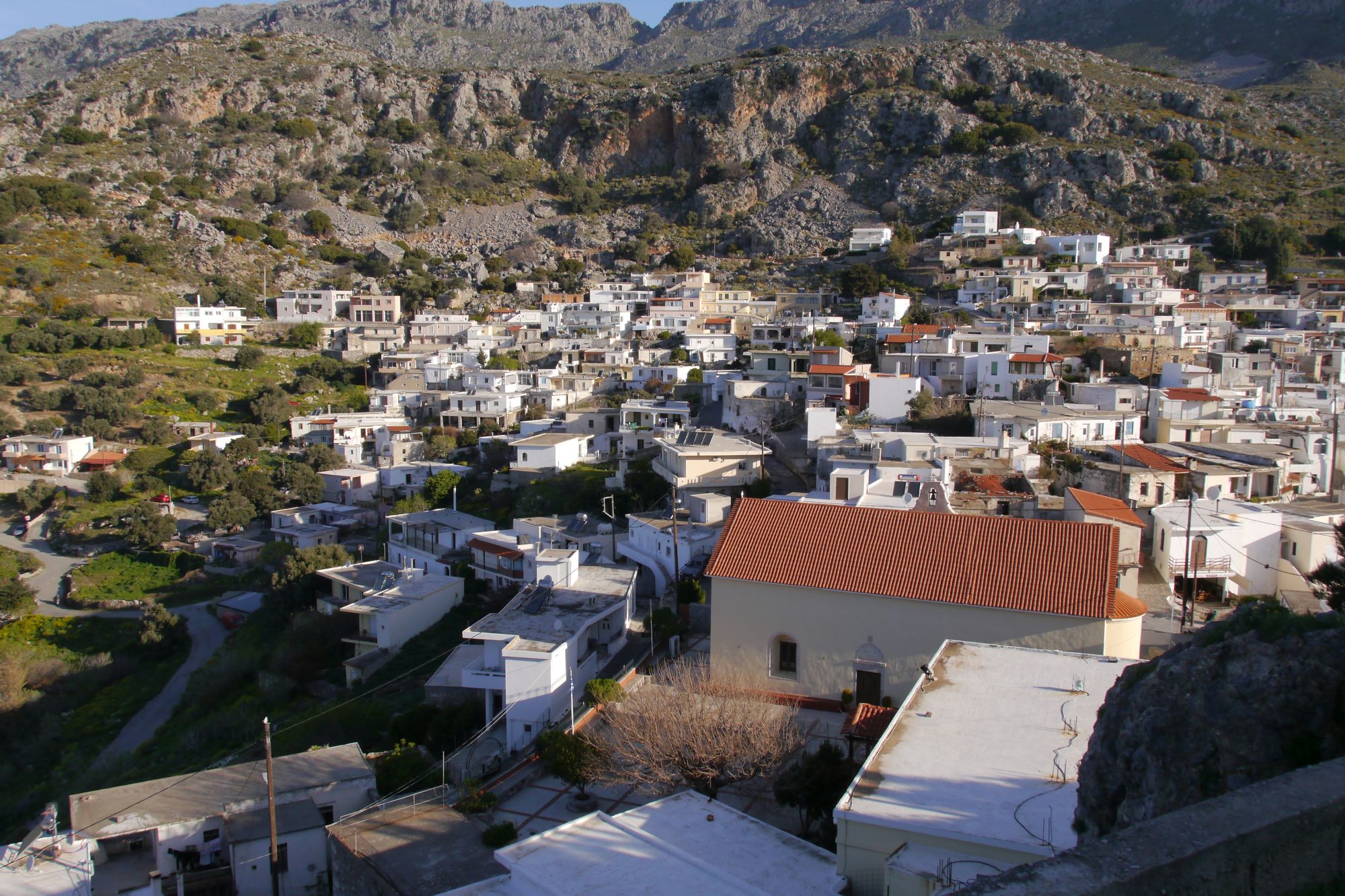
Chronology Sellia
Probably around 1200. Foundation of the village.
1836-1840. foundation of the elementary school.
1886. Construction of the main church ‘Assumption of the Virgin Mary’ (Kimisi tis Theotokou).
1909. Founding of the cultural association “The Fini.x“.
1911. Construction of the Sellia – Kotsifou Gorge road (until just before the chapel ‘Agios Nikolas’).
1915. The last inhabitants of Finikias leave the village.
1920. Construction of the lower well, the plane tree located there was planted in 1900.
1929. Foundation of the agricultural cooperative.
1926-1930. Construction of the elementary school in the courtyard of the Church of the Assumption of the Virgin Mary.
1932. First motorized oil mill.
1938. First radio in the village.
1951-1953. Construction of the road through the Kotsifou Gorge, closing the gap to Kanevos.
1953. First car in Sellia.
1955. Beginning of the expansion of the water supply network up to the water connection in every house.
1957. First professional baker in the village.
1959.Commissioning of an agricultural medical practice.
1959. Founding of the association ‘Krioneritis’; Association of Emigrants and Friends of Sellia.
1963. SClosure of the last factory in the village (oil mill).
1968. Publication of the booklet ‘The Plakias’, published by the Sellia Association of Athens, then by ‘Krioneritis’ with content on everything related to Sellia.
1969. Electrification of Sellia.
1964-1969. Construction of the new elementary school.
1971. End of operation of the water mills.
1973. Operation of the spiritual center in the former elementary school next to the church.
1974. Referendum to establish the republic.
1975. First automatic telephones.
1978. Renewed foundation of the association ‘The Finikas’.
1978. Fundation of the preschool.
1979. No to the cement factory between Sellia and Rodakino.
1979. Garbage collection point in the gorge.
1982. Cooperative oil mill on the Kastellos.
1983. Founding of a football team (‘New Finikas’).
1986. Sports field of Sellia.
1986. Foundation of the kindergarten.
1999. Founding of the folklore museum.
1999. Lending library.
Sources:
– Χώρια της π. Επαρχίας Άγιου Βασιλείου Ρεθύμνου; Τόμος Δ (4) του Έκδοδη Διεθνούς επιστημονικού συνέδριου για την πρώην επαρχεία Άγιου Βασιλείου; Ρέθυμνο 2011, Kostas I. Andredakis – Σελλιά – σελ./S.543
– Kostas I. Andredakis; Οι Σελλιανοί, Των Σελλιών του Δήμου Φοίνικα Ρεθύνης; Ρέθυμνο 2003
– Official site of the Municipality of Agios Vasilios (http://www.agios-vasilios.gr/)

























